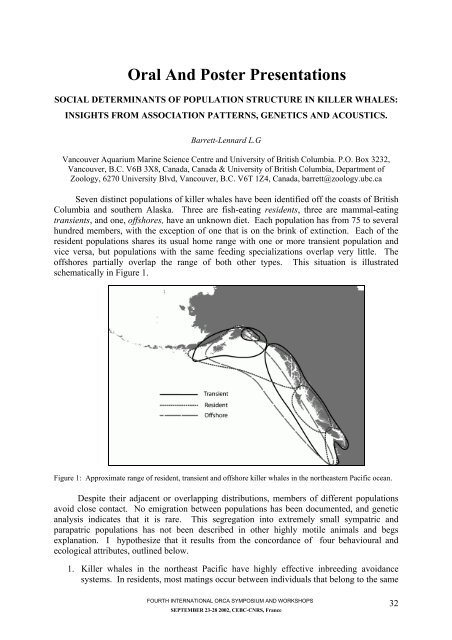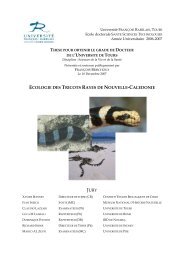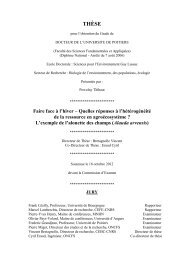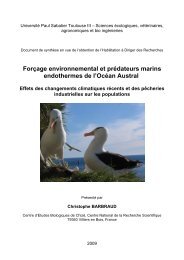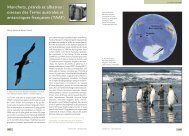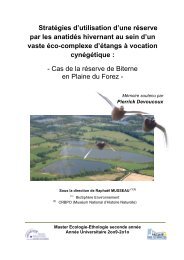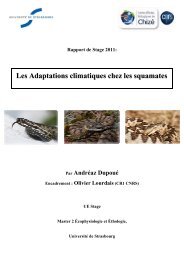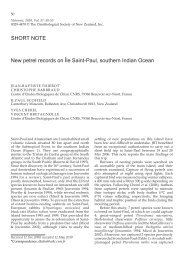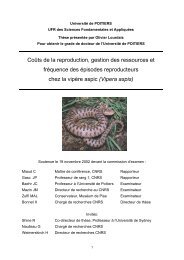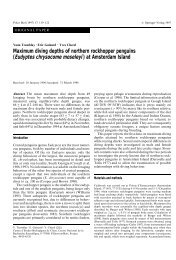Fourth International Orca Symposium and Workshop - CEBC - CNRS
Fourth International Orca Symposium and Workshop - CEBC - CNRS
Fourth International Orca Symposium and Workshop - CEBC - CNRS
Create successful ePaper yourself
Turn your PDF publications into a flip-book with our unique Google optimized e-Paper software.
Oral And Poster Presentations<br />
SOCIAL DETERMINANTS OF POPULATION STRUCTURE IN KILLER WHALES:<br />
INSIGHTS FROM ASSOCIATION PATTERNS, GENETICS AND ACOUSTICS.<br />
Barrett-Lennard L.G<br />
Vancouver Aquarium Marine Science Centre <strong>and</strong> University of British Columbia. P.O. Box 3232,<br />
Vancouver, B.C. V6B 3X8, Canada, Canada & University of British Columbia, Department of<br />
Zoology, 6270 University Blvd, Vancouver, B.C. V6T 1Z4, Canada, barrett@zoology.ubc.ca<br />
Seven distinct populations of killer whales have been identified off the coasts of British<br />
Columbia <strong>and</strong> southern Alaska. Three are fish-eating residents, three are mammal-eating<br />
transients, <strong>and</strong> one, offshores, have an unknown diet. Each population has from 75 to several<br />
hundred members, with the exception of one that is on the brink of extinction. Each of the<br />
resident populations shares its usual home range with one or more transient population <strong>and</strong><br />
vice versa, but populations with the same feeding specializations overlap very little. The<br />
offshores partially overlap the range of both other types. This situation is illustrated<br />
schematically in Figure 1.<br />
Figure 1: Approximate range of resident, transient <strong>and</strong> offshore killer whales in the northeastern Pacific ocean.<br />
Despite their adjacent or overlapping distributions, members of different populations<br />
avoid close contact. No emigration between populations has been documented, <strong>and</strong> genetic<br />
analysis indicates that it is rare. This segregation into extremely small sympatric <strong>and</strong><br />
parapatric populations has not been described in other highly motile animals <strong>and</strong> begs<br />
explanation. I hypothesize that it results from the concordance of four behavioural <strong>and</strong><br />
ecological attributes, outlined below.<br />
1. Killer whales in the northeast Pacific have highly effective inbreeding avoidance<br />
systems. In residents, most matings occur between individuals that belong to the same<br />
FOURTH INTERNATIONAL ORCA SYMPOSIUM AND WORKSHOPS<br />
SEPTEMBER 23-28 2002, <strong>CEBC</strong>-<strong>CNRS</strong>, France<br />
32


